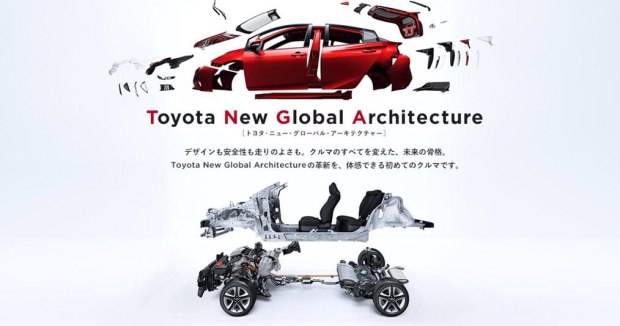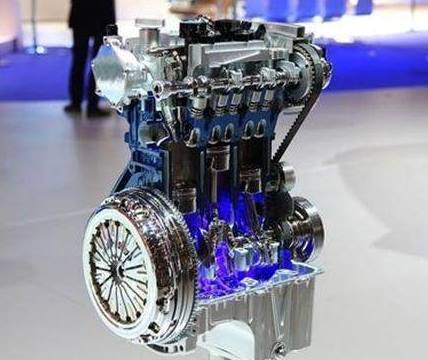In addition to Weibo, there is also WeChat
Please pay attention

WeChat public account
AutoBeta


2024-11-17 Update From: AutoBeta autobeta NAV: AutoBeta > Industry Report >
Share
AutoBeta(AutoBeta.net)05/15 Report--
Yesterday, Guangfeng put into production of TNGA M series three-cylinder low-displacement engine, which was approved by Guangzhou Municipal Bureau of Ecological Environment. The annual output of this three-cylinder engine codenamed M15C reached 90, 000 units. The new engine will replace the 1.2T turbocharged engine used in the existing dazzling, enjoyable and future Leiling models.

Many friends wonder why even Toyota, which is famous for its stability and durability in technology, has invested in the research and development of three-cylinder models. At present, a large proportion of vehicles on the market use three-cylinder engines. European and American car manufacturers, such as Ford's 1.0-1.5 displacement ecoboost series engine, Volvo T3 Edrive1.5T engine For BMW's B38 engine, Toyota has the latest M15C three-cylinder engine among Japanese three-cylinder engines; Honda's 1.0L P10A1 three-cylinder turbocharged engine; and Nissan's low-configuration Mach uses the HR12DE engine as a representative.
After the discontinued E90 Series BMW 3 Series became the natural aspirated song of BMW with in-line six cylinders, many people thought that the ride comfort of the BMW with 4 cylinders would be greatly reduced. Later, the N52gam54 series turbocharged engine has a good power output and fuel economy, many fans began to say, "this melon is very sweet."

At that time, the 3-series changed from 6-cylinder to 4-cylinder. The main controversial point is that the 4-cylinder engine is not as smooth as the 6-cylinder engine, but at least the 4-cylinder engine is still even, and after careful adjustment, the ride comfort is at least guaranteed.
For many in-line three-cylinder engines, there is no way to achieve inherent vibration balance. No matter how it is adjusted, the 3-cylinder engine will have greater vibration and noise that cannot be completely eliminated compared with the 4-cylinder engine. It is precisely because the three-cylinder engine has inherent defects in the precision of operation, so for a long time, this kind of engine has been used in economical models; let many older generation drivers know that the engine from Xiali to Suzuki Otto is the representative of the three-cylinder model.
So why are Volvo, BMW, Ford and other manufacturers keen to promote these three-cylinder models? Let's start with the TNGA at the beginning of the article, that is, "Toyota's New Global Architecture". The global platform cars used by multinational companies such as Ford, Volkswagen and Toyota are built by modularization according to the needs of different countries and regions, just like building blocks, in which engines are also produced through modularization.
In general, a mold can only produce one model on a production line. if a factory produces more than ten kinds of engines, it is necessary for the production line to use ten moulds and more than dozens of cylinder blocks, flywheels and oil sumps used by ten kinds of engines, and only one factory may cost billions of dollars.
The common feature of these three-cylinder engines is that all their parts are universal. Even if the piston size on the three-cylinder model is the same as the design of the four-cylinder and six-cylinder models, all dimensions are completely standardized. For example, the cylinder volume of the B38 and B48 engines used by BMW is 500cc, then the pistons of the B38 B48 series engines can be used interchangeably. This is a modular engine, and all you have to do to build an engine is to put together standardized parts like building blocks.
Well, in fact, will the power and fuel consumption economy of these three-cylinder models be even worse? we know from the Ford 1.5ECOBOOST engine that won the top 2018 Ward engines, this 1.5T engine has the performance of 184p maximum torque 243nm, which is the best in the three-cylinder engine. The fuel consumption of 100 kilometers is officially 5.6L, and its fuel consumption of 100km is at the level of 78.5 liters in a forum. The performance of such fuel consumption is considerable. In terms of technology, many manufacturers use damping measures for three-cylinder models, such as engine shock absorber feet, dual-mass inertial flywheel technology, mute chain, balance shaft, and so on; by using these technologies in the engine, so that the driver can not receive the vibration generated by the engine in the car under the condition of running or idling.
Under the general trend in the future, the three-cylinder model plus the 48-volt light hybrid system will have better performance; in terms of fuel consumption, it will be more efficient in combustion than the four-cylinder model; so consumers are not worried about the laughing stock of the three-cylinder model.
Welcome to subscribe to the WeChat public account "Automotive Industry Focus" to get the first-hand insider information on the automotive industry and talk about things in the automotive circle. Welcome to break the news! WeChat ID autoWechat
Views: 0
*The comments in the above article only represent the author's personal views and do not represent the views and positions of this website. If you have more insights, please feel free to contribute and share.











© 2024 AutoBeta.Net Tiger Media Company. All rights reserved.